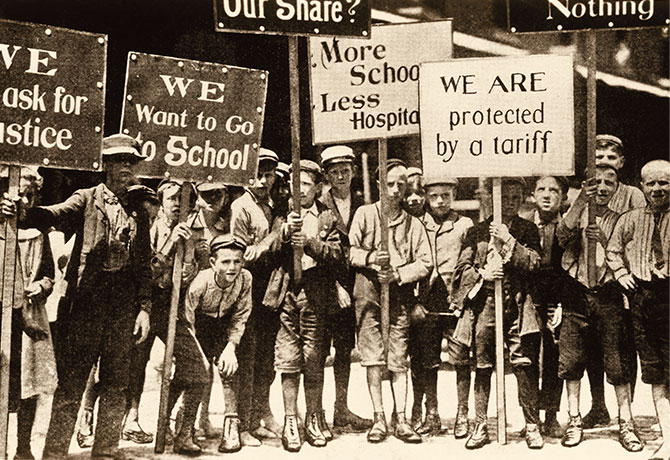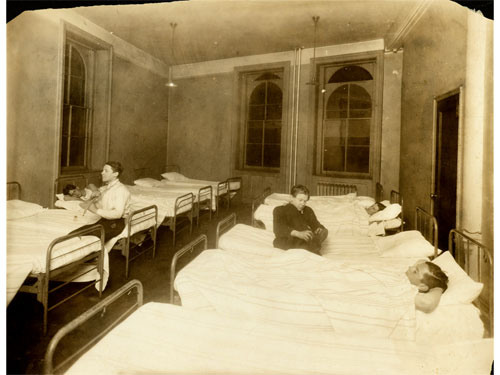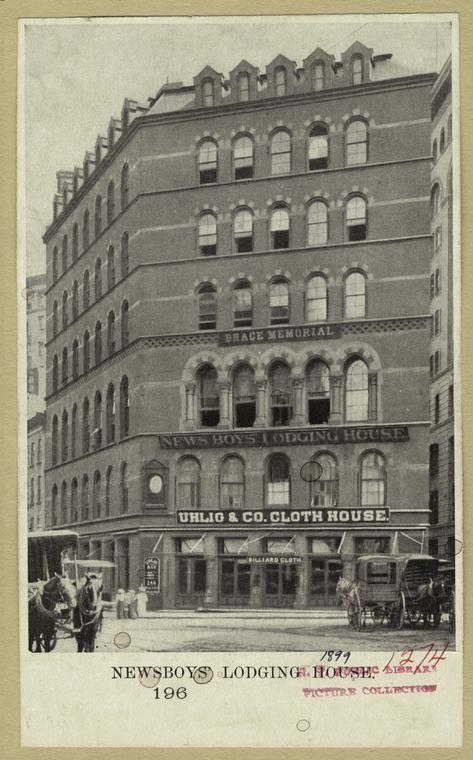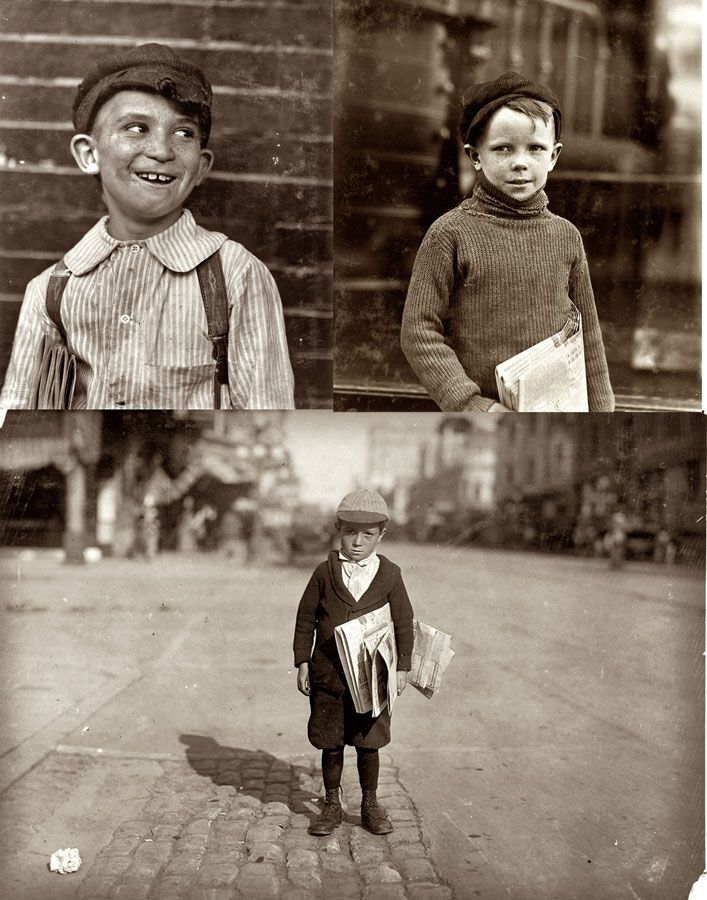The newsies often lived in orphanages and wore old, ragged clothes. Some of the newsies who were a little more wealthy had slightly better clothes. During the winter the newsboys were not provided with coats or shoes. They either had to wear torn pants, worn down shoes (if they had any), or walk barefoot.

Protesting, Scholastic, Date unknown.


